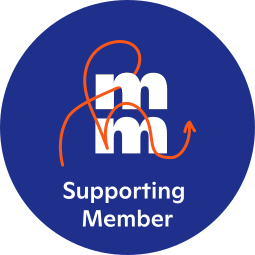As humans we are hardwired for survival. This is a blessing and serves a necessary purpose when we encounter danger or threatening situations in our environment. However, this hard wiring can become problematic if we begin to perceive everyday interactions as threatening. We call it the flight or fight syndrome. We perceive something in our environment to be a threat, which triggers the release of adrenaline, norepinephrine and cortisol to be released into the body, triggering a visceral response involving the heart, gut and lungs. This may be experienced as increased heart rate, difficulty catching our breath, lump in the throat, muscle tension, and flushing or feeling hot.
We can think of our brain as existing in 3 layers. The bottom being the brain stem, responsible for automatic bodily activities such as breathing, heart rate, digestion and perspiration; the middle, limbic brain, being where we perceive our environment and register emotion, and the top, the neocortex as being where our thinking and planning occurs. When our middle layer perceives a threat in our environment, it immediately sends signaling to the brain stem below and the cortex above. However, the signaling reaches the lower brain stem slightly faster than it reaches our thinking and planning region. This is why our reaction feels so automatic, because our automatic bodily processes are being triggered before we have had the chance to think through and plan. So how can we train ourselves to delay automatically reacting when feeling fearful of giving a speech, meeting a new person, or trying to learn a new skill, which are clearly not life threatening situations? We can practice top down or bottom up approaches on a daily basis to train our brain how to react to these perceived threatening situations. Top down approaches would be cognitive behavioral training, where we engage our thinking/planing brain to learn to reframe how we perceive our environment so we don't perceive normal daily interactions to be a threat. Bottom up approaches include addressing our senses first allowing the results to filter up towards or thinking/planning region by practicing mindfulness. Examples include, positive visualization, connecting socially with family and friends, physical touch, deep breathing, exercise, and meditation. The key is being mindful/presently focused in the moment and observing the world around us as we percieve it through our 5 senses.
We are all familiar that the two hemispheres in our brain (left & right) work together to control different aspects of our motor functioning, sensory perception and output, logic, artistic capabilities, athletic capabilities, personalities, etc... Research has shown that connectivity in and use of the right hemisphere is negatively impacted by prenatal testosterone, according to neuroscientist, Judith Lauter. Dr. Lauter discusses the importance of a hormone free prenatal environment in order to facilitate right brain development in the fetus. She discusses this in her book, How is Your Brain like a Zebra, in which she describes ways expecting parents can reduce exposure of prenatal T by reducing stress in their lives. Recommendations include behaviors that are generally accepted as healthy practices for all individuals, but Dr. Lauter discusses pregnancy is a crucial time to practice healthy eating, sleeping and exercise habits along with dialing stress back to a minimal level. And of course no drinking, smoking or drug use would be advisable during this time or during breastfeeding. For the months and first several years following childbirth, Dr. Lauter suggests breastfeeding and holding babies as much as possible. She cites the practices of indigenous tribes that breastfeed until 4-5 years old, allow children to sleep in the same room and provide constant holding. Western practices, as a majority, have moved away from this approach to child rearing as we are encouraged to return to work as soon as possible after child delivery, but she warns neglecting to provide proper nurturing post childbirth may be detrimental to activity within the right hemisphere of our offspring. For those of us who may have been exposed to prenatal T and perhaps did not experience the good fortune of a nurturing environment, Dr. Lauter stresses that right brain development can be facilitated through spending time outdoors, interacting socially with diverse groups of people, physical touch, such as hugging, exercise and proper nutrition.
Apple Cider Vinegar
Apple cider vinegar contains acetic acid, probiotics and enzymes and it dates back to 5,000 B.C. Hippocrates (the “father of medicine”) used vinegar medicinally to clean wounds. Apple Cider Vinegar has benefits for weight loss, controlling cravings, decreasing cholesterol, and lowering blood sugar levels after meals. Apple cider vinegar can further help when trying to reset the gut microbiome, as it’s fermented, which means it has live bacteria that can help build up the good bacteria lining in the GI tract. Here’s my favorite recipe: 2 teaspoons of apple cider vinegar with the juice of 1 lemon or lime, and 4 ounces of carbonated water. Drink and enjoy!













